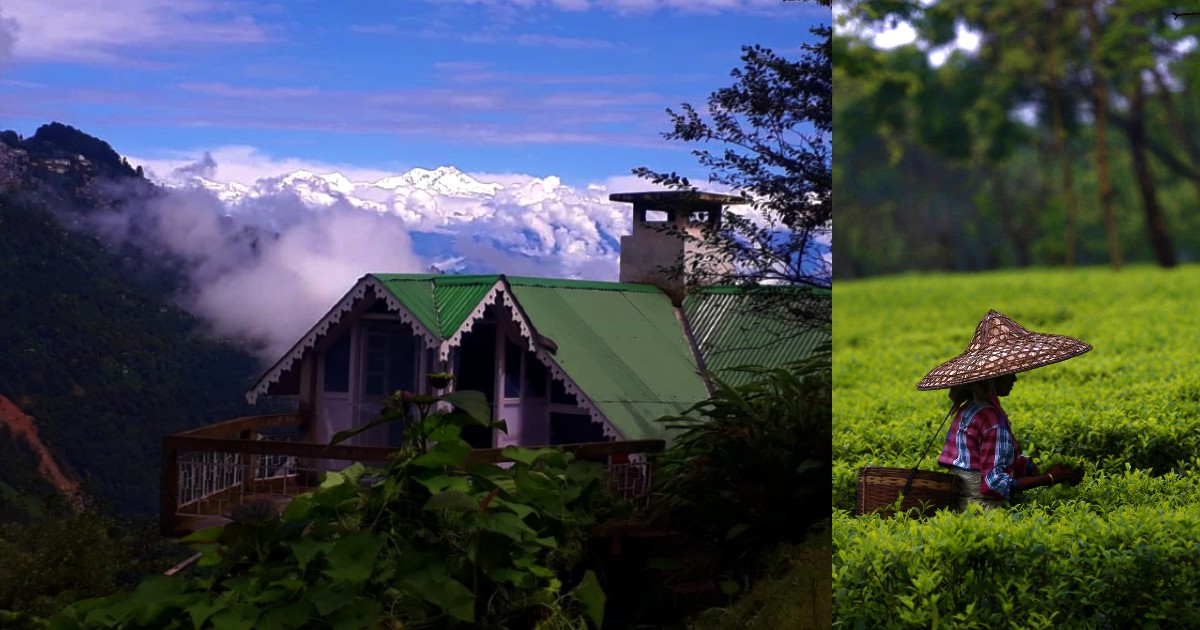Not far from Darjeeling, lies a quiet and dainty tea village which is a new add on to the tourist roadmap of West Bengal. With lush green mountainscapes, numerous cascading streams of the way, dense forests and a breathtaking view of snow-capped Kanchenjunga, the hamlet Rangaroon is the abode of the pristine beauty of nature. Roughly between Darjeeling’s main town and the Tiger hill, lies the Rangaroon Trekkers Hut which is perfect for exploring the tea garden of the village, which was set up by the British in the 1700s.
Also Read: This 4000 Feet High Orange Village Near Darjeeling Is Straight Out Of A Fairy Tale
A Hidden Tea Estate In The East Himalayas
If you want the experience of fascinating tea tourism in the heart of echoing mountains, Rangaroon can be an ideal pick. It is nestled at an altitude of around 6000 feet above sea level, nearly 20 kilometres away from Darjeeling. A new road, which is under construction now, will bring down the distance between Darjeeling and Rangaroon to about 10 kilometres.
At the tea garden, harvesters can be seen plucking tea leaves, wearing traditioning tea hats. The hamlet also houses a tea factory named Aloobari, which has been turned into a museum now and has machines brought to India during the colonial era. The hilly Darjeeling town looks magical when viewed from Rangaroon, especially during the night. Top 10 Regional Dishes From Darjeeling That Will Satisfy Your Soul
Also Read: We Stayed At This Cosy Homestay Near Darjeeling During Pandemic & It Was Worth Every Risk
A Tranquil Stay Far From The Crowds With Prominent Tourist Spots In Proximity
All the popular tourist spots near Darjeeling like the Tiger Hill viewpoint, Batasia Loop and Ghoom monastery are in proximity to Rangaroon. The hamlet has homestays that offer a tranquil stay away from the crowd while allowing the exploration of nearby tourist spots.
The word Rangaroon has come from ‘Rai Gurung’. Most of the people in the village belong to the Rai and Gurung communities. Rangaroon can be visited at any time of the year, depending on, in which form you want to enjoy it. For witnessing the snow-capped mountains, winter is the best time. To feast eyes on the mesmerising flowers of the valley, spring is ideal. And to see the valley at its greenest, monsoon is best.

